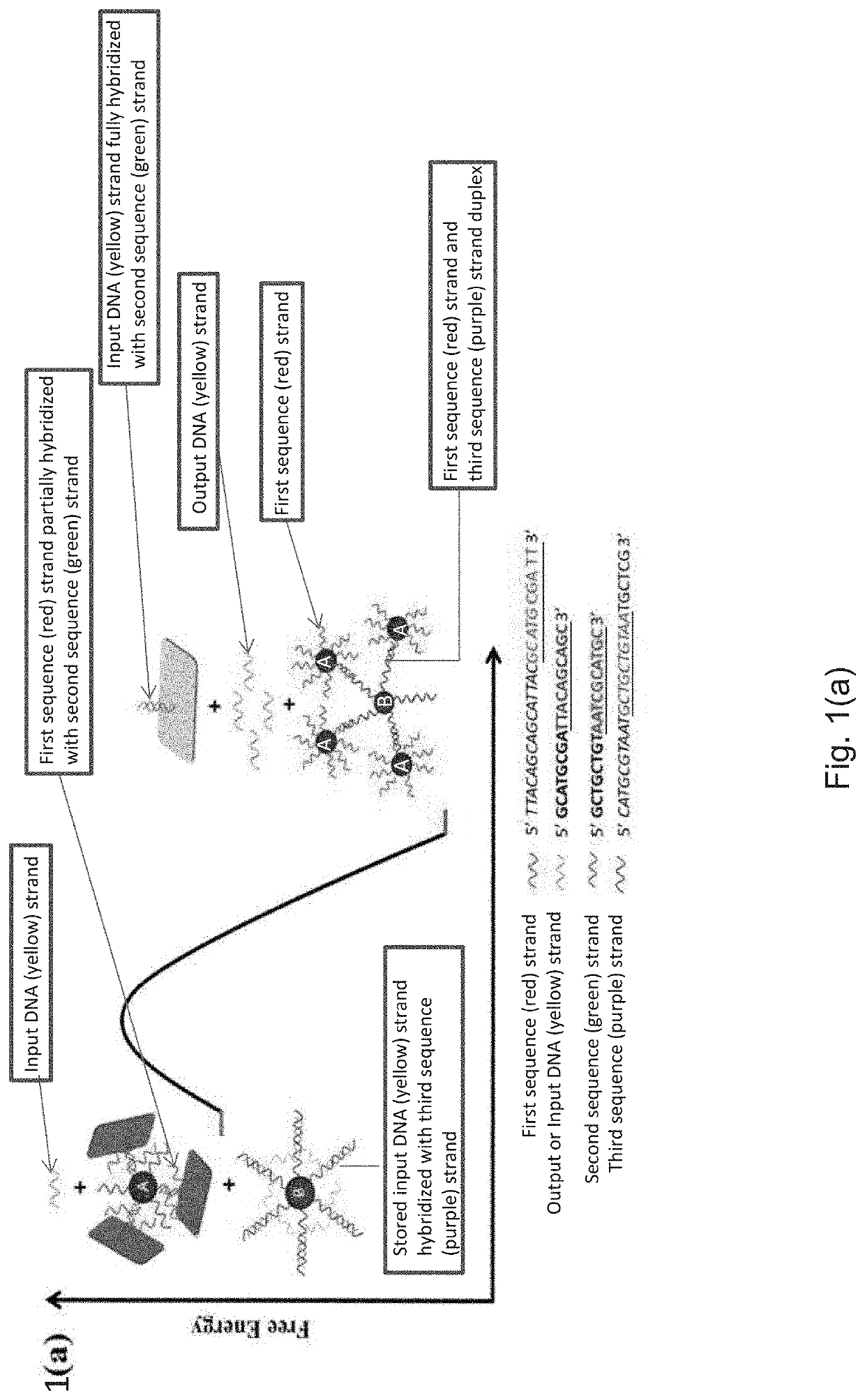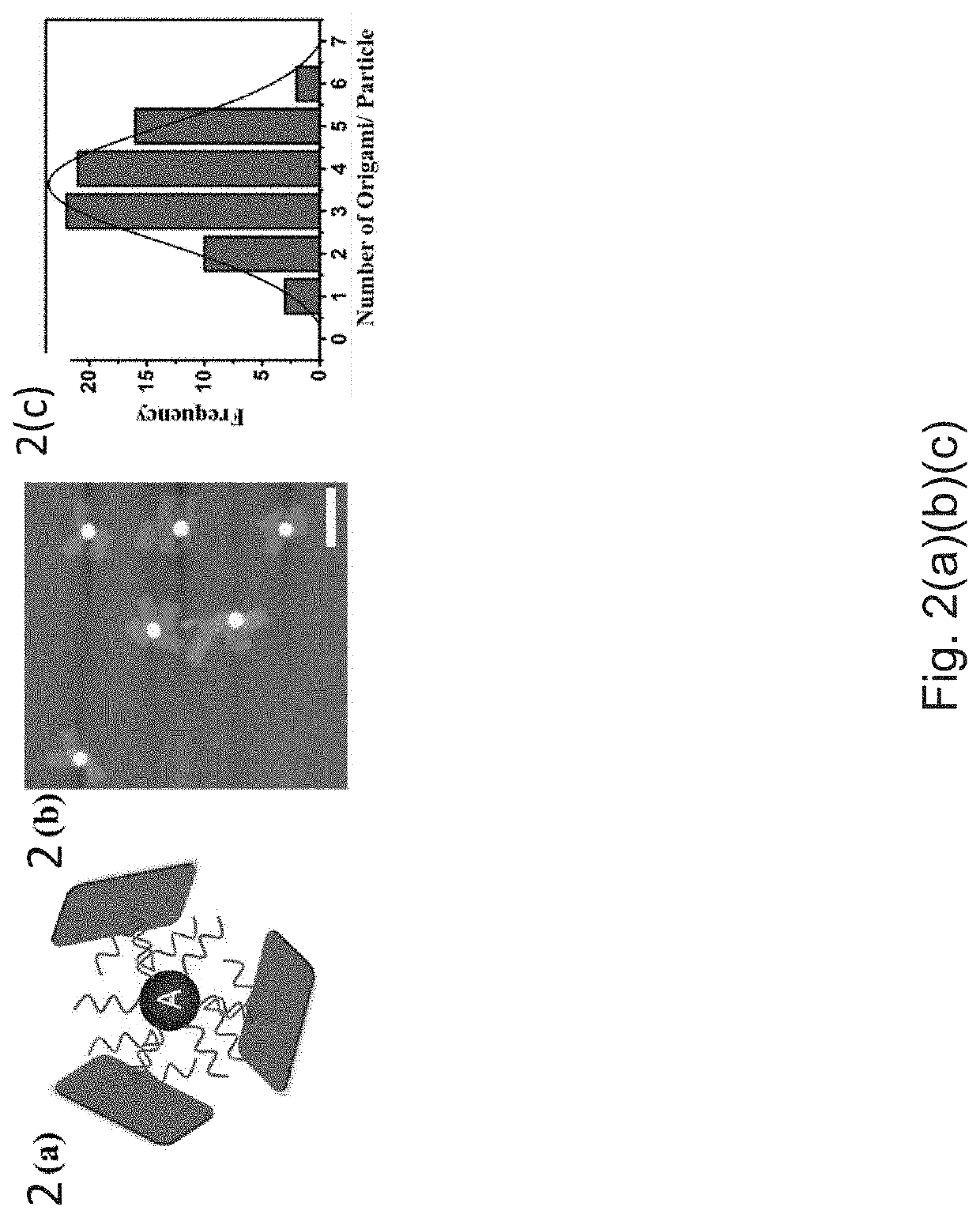Methods for Isothermal Molecular Amplification with Nanoparticle-Based Reactions
a technology nanoparticles, which is applied in the field of isothermal molecular amplification with nanoparticle-based reactions, can solve the problems of complex and costly methods for detection of infinite amounts of materials, and the challenge of using such optical methods in practical real-life applications, and achieves the effect of improving the sensitivity of other methods
- Summary
- Abstract
- Description
- Claims
- Application Information
AI Technical Summary
Benefits of technology
Problems solved by technology
Method used
Image
Examples
example 1
[0055]Begin with two 20 nm gold nanoparticles (AuNP), namely AuNP A (initial or deprotected particles A) and AuNP B (storage particles B), where each may be functionalized with ‘(red strand)’ first sequence strands and ‘(purple strand)’ third sequence strands of DNA, respectively. Red (first sequence) strands may be grafted on AuNP A and purple (third sequence) strands may be grafted on AuNP B. There may be an approximately 200 first sequence (red) strands on AuNP A and approximately 200 third sequence (purple) strands on AuNP B. AuNP A, in addition to the first sequence (red) strand, may be functionalized with a second sequence (green) strand. Part of the second sequence (green strand) of DNA may contain a sequence portion (5′ AAT CGC ATG C 3′—underlined) which may be complementary to the part of first sequence (red) strand of DNA sequence (5′GCA TGC GAT T 3′—underlined). First sequence and second sequence (green and red) strands of AuNP A may be partially hybridized. Due to select...
example 2
on and Characterization of AuNP-Origami Constructs (Protected Particles A)
[0063]AuNP-Origami constructs were fabricated by mixing 20 nm AuNPs A and rectangular origami together (several per particle) by mixing and letting origami hybridize on initial or deprotected particles A.
[0064]After purification by known methods such as for example gel electrophoresis, atomic force microscopy (AFM) measurements were carried out to characterize origami-AuNP conjugates (protected particles A). An AFM image is shown in FIG. 2(b). The height profile extracted from AFM imaging shows several DNA origami structures with approximately 1.5 nm height that are connected to an approximately 18 nm height spherical AuNP (particles A) in high yield. There are very few unbound DNA origami found in the area of view suggesting serial purification was successful. In FIG. 2(c) a histogram of number of origami bound to one particle A is shown and the distribution fits a Gaussian profile. On an average 3-4 origami ...
PUM
| Property | Measurement | Unit |
|---|---|---|
| diameter | aaaaa | aaaaa |
| diameter | aaaaa | aaaaa |
| diameter | aaaaa | aaaaa |
Abstract
Description
Claims
Application Information
 Login to View More
Login to View More - R&D
- Intellectual Property
- Life Sciences
- Materials
- Tech Scout
- Unparalleled Data Quality
- Higher Quality Content
- 60% Fewer Hallucinations
Browse by: Latest US Patents, China's latest patents, Technical Efficacy Thesaurus, Application Domain, Technology Topic, Popular Technical Reports.
© 2025 PatSnap. All rights reserved.Legal|Privacy policy|Modern Slavery Act Transparency Statement|Sitemap|About US| Contact US: help@patsnap.com



